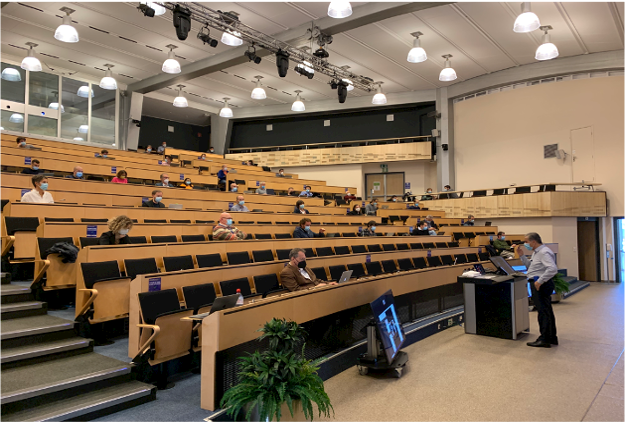
ALICE 3 workshop: towards a next-generation heavy-ion experiment for the 2030s:
By Jochen Klein & Marco van Leeuwen
On 18 and 19 October, ALICE held a workshop on ALICE 3, the next-generation heavy-ion experiment for Run 5 of the LHC and beyond. This new heavy-ion programme will address some of the physics questions that are not accessible with Runs 3 and 4. First discussed within the ALICE collaboration and at the heavy-ion town hall meeting in 2018, an expression of interest on the follow-up to ALICE was drawn up and submitted as input to the European Strategy for Particle Physics update. At the beginning of 2020, dedicated working groups were then set up in order to work out the physics case, the physics performance and a detector concept. The ALICE 3 workshop programme involved a mix of presentations on ALICE 3 physics performance studies and invited presentations outlining the landscape of theory and experiment over the next decade. The workshop took place in a hybrid format and was attended by more than 300 participants, both at CERN and via Zoom.
A major goal of ALICE 3 is to quantitatively understand the connection between heavy quark transport and hadronisation, e.g. by measuring beauty meson and baryon production and azimuthal asymmetries as well as azimuthal correlations between charm and anti-charm mesons and the production of multi-charm baryons. Another key area is the determination of the temperature and how particles flow in the quark–gluon plasma (QGP) in the early stage of the collision through measurements of real and virtual photon emission. Virtual photon emission is also sensitive to chiral symmetry restoration and, in particular, the mixing of the rho and a1 mesons at high temperatures. ALICE 3 would provide unique access to these topics and open up new possibilities in other areas too.
In order to achieve the required performance, a novel detector concept is being proposed, with an ultra-light tracker based on silicon pixel sensors, covering the pseudo-rapidity range of -4 to +4 and installed within a superconducting magnet system. A high-resolution vertex detector, retractably mounted inside the beam pipe, provides the ultimate pointing resolution. The tracking is complemented by particle identification over the full acceptance, realised with different technologies, including Si-based time-of-flight sensors. Further specialised detectors extend the physics reach in various areas.
The workshop was the first ALICE event with significant in-person participation since the start of the COVID-19 restrictions. It also marked the start of discussions of ALICE 3 with the community at large and of the review process with the LHC Experiments Committee (LHCC).

